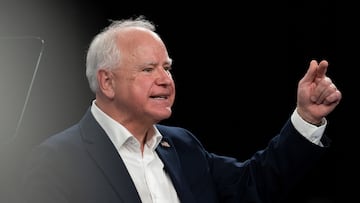When was Tim Walz elected Minnesota Governor? How much did he win by?
Tim Walz entered public life close to two decades ago. A look at his electoral history before the vice presidential debate scheduled for Tuesday, October 1.


Minnesota Governor Tim Walz will face off with Republican Senator JD Vance on Tuesday in the vice presidential debate hosted by CBS News.
This will not be Governor Walz’s first debate. After serving in public life since the early 2000s, he has faced off against opponents but has never been on a stage like that, which he will share with Senator Vance on Tuesday.
Tim Walz was elected governor in 2018 and re-elected in 2022 with 53.84% and 52.27% of the vote, respectively. Democrats, who run Minnesota under the Minnesota Democratic Farmer-Labor Party, have held the governor’s mansion since 2011.
Before running for Minnesota Govenor, Walz represented the state in the House of Representatives from 2007 to 2019. Minnesota’s 1st District is not a safe place for a Democrat, but Walz galvanized support in an area that voted for Donald Trump in 2016 and 2020.
Read more:
Governor Walz has a favorability advantage going into the debate
Governor Walz leads the Ohio senator in terms of favorability and it will be critical to see whether that remains the case after the debate. Since being named VP Harris’ running mate, Governor Walz favorability has increased from 31.4 percent to 40 percent, according to FiveThirtyEight. When considering his unfavorability, he stands at +3.5 in terms of net favorability.
Related stories
The Trump campaign, which has seen favorability for its VP drop since he was added to the ticket, is eager to give voters a new lens through which to view their candidate.
In mid-July, when Donald Trump announced Senator Vance would be his pick, his favorability nationally stood at 25.6 percent, according to FiveThirtyEight. However, some analysts assumed these low figures would rise as voters became acquainted with the GOP pick. That theory has been proven true, with the most recent polling suggesting that around a third of voters have a favorable impression of him. The downside is that his unfavorability numbers have also increased over the same period, with 45.7 percent of voters sharing a negative view of the Ohio leader. This puts his net favorability at -11.3.
Complete your personal details to comment